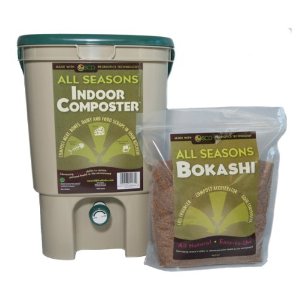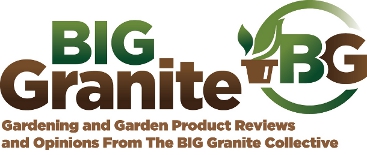What is Bokashi Compost?
In this post I’m going all Japanese yet again!
One of the great things about Big Granite is all the enthusiastic advice you can find about so many gardening subjects. I love to write for BG and, of course I also love to get all the tips I can from my fellow contributors.
Recently I’ve been reading all I can about composting so I can improve on the techniques I already use. Although I live in suburbia I am lucky to have a reasonably sized garden so building a decent sized compost heap is not a problem.
But there is one problem – what to do with meat, dairy products and cooked food. I know you should avoid putting these on the compost. But it is not a problem any more though. The answer is the amazing Bokashi Composting system. I have just ordered my Bokashi compost kit here*
and am desperate to get started.
For those who like to know these things (like me) it was invented by a Japanese soil scientist called Prof. Teruo Higa in 1980.
What is bokashi composting?
Bokashi is the Japanese word for fermentation. You use a bokashi bucket together with bokashi bran to ferment all your household food waste – including meat and fish (cooked or uncooked), dairy products, coffee grounds, tea bags , fresh fruit and veg and even some small bones.
What is bokashi bran?
It is wheat bran which is enriched with active effective micro-organisms (EM) and molasses. These include good stuff such as Lactic Acid Bacteria, Yeast, and Phototrophic Bacteria. It is often fed to chickens to help their digestion.
What is the process?
You just need a bokashi bucket and some bokashi bran. Layer your food waste with the bran and keep doing that until the bin is full. Press out the air with a masher, then seal the bucket tight with its lid. The waste will undergo anaerobic fermentation. You can have two buckets so you can fill the second one while the first is fermenting. Fermentation takes 2 – 3 weeks. During this time, drain of the bokashi liquid. You can use it as plant food diluted 1:300. Undiluted, use it to freshen your drains and keep them free of gunk!
Are there bad smells?
No. As long as you use enough bran, the smell is like fermenting pickles. You can keep the bin in your kitchen. You will see lots of white mould, this is good. Black, blue or green mould is bad and you haven’t used enough bran. If you do have bad mould you will have to discard the contents of your bin.
What do I do with the fermented scraps?
The scraps are now perfectly safe to add to your compost heap. It will help to accelerate the composting process. Or you can add them directly to your wormery (but don’t over feed it). Or just dig it into the soil to condition it. By the way, it seems that rats and mice dislike bokashi pickled waste, so if you’ve ever had a problem with vermin, this is another reason to give this type of composting a try.
Here’s an amazing fact to illustrate the power of EM.
After the tsunamis in both Thailand and Japan and hurricane Katrina, huge quantities of EM in liquid form were used to control the terrible odours and sanitation problems of rotting organic matter left behind by the floods. I suppose the mud is quite anaerobic so EM’s thrive in it.
*Please note the link above directs to amazon as I have found they offer great deals on Bokashi compost kits.








